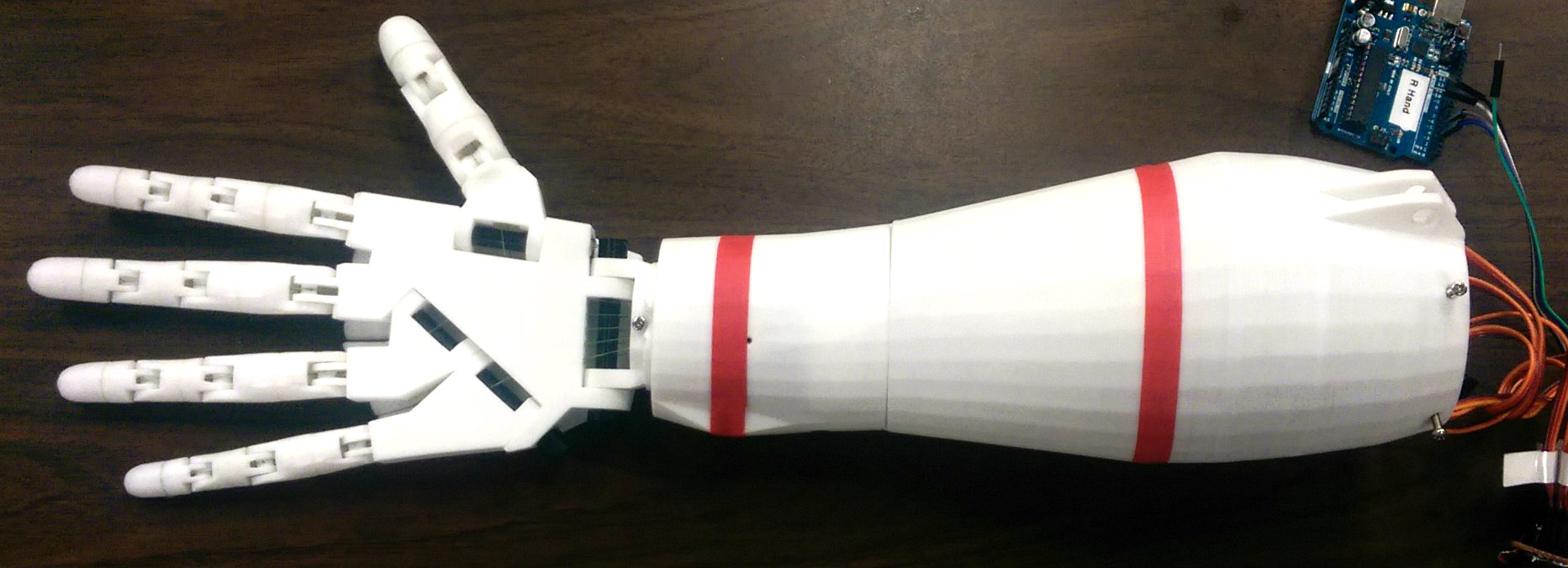Conestoga’s Robotics Innovation Group (RIG) has taken learning beyond the classroom by building RIGbot - a 3D-printed life-size robot based on the InMoov project. To date, there are only two other known academic institutions in Canada that have attempted the project.

Students in the Robotics Innovation Group are using the InMoov open source project to 3D print, assemble and wire a life-size humanoid robot. To date, only two other known academic institutions in Canada have attempted the project.
InMoov is the world’s first open source life-size humanoid robot. It was developed by French designer and sculptor Gael Langevin who made the source code freely available for others to access and modify. All pieces of the robot can be produced using a 3D printer.
Conestoga’s RIG was formed in June 2015 by Dalibor Dvorski and Jane Carr - faculty members in the School of Engineering and Information Technology - and student member Tarek Rahim. Dvorski came up with the idea for the group at a Skills Canada competition in Saskatoon. There he was introduced to InMoov and had the opportunity to meet with robotics experts.
“RIG was formed with the idea of opening up the world of robotics to all students; we bring them together with faculty and industry partners to collaborate on multidisciplinary solutions in academic and extracurricular projects,” said Dvorski who emphasized RIG is a collaborative venture. The group provides students with training and access to robotics software and hardware to promote innovation outside of student course work. RIG also organizes regular robotics seminars for students and faculty.
RIGbot is the group’s first project and so far students have 3D printed, assembled and wired a robotic arm. They’ve gone a step further though by rewriting source code and redesigning 3D models to improve what was originally created by Langevin. RIG’s contribution will be noted on the InMoov website.
As work on the robot progresses, interest in RIG continues to build. Since its formation, RIG has attracted 20 student members and opened two student workshops - one at Conestoga’s Doon campus (2A315) and another at the Cambridge campus on Fountain St. (room A2130).
"I never thought I'd get the opportunity to say I'm advancing research into humanoid robotics,” said Rahim, a Computer Engineering Technology student. “None of us expected RIG would grow this fast or attract the amount of interest that it has. Getting the opportunity to experiment beyond the program curriculum and to interact with industry has been invaluable."
Over the coming months RIG will also design and develop touch-based and voice-based mobile interfaces for RIGbot and complete programming to allow RIGbot to house a supercomputer.
“Since its inception RIGbot has grown leaps and bounds in terms of a diverse community of designers, developers and contributors,” said Carr. “We look forward to exciting ventures into the worlds of vision, movement, sensing and if we dare to dream - artificial intelligence.”
Going forward, the group plans to 3D print, build, and program boats, submarines and drones controlled by a mobile device to acquire real-time data such as water and air quality.
For more information about RIG, students, faculty and industry partners are invited to contact Dalibor Dvorski
